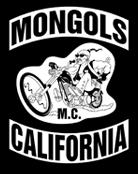 Tangible or Intangible? This is actually an interesting question. If you erect a sign displaying a trademark over a store, isn’t that a tangible representation of a trademark? Of course it is. On the other hand, if you were to license your trademark for use by another company, you don’t transfer a physical representation of the trademark, you sign an agreement transferring the trademark “rights.” That, in fact, is the key. A trademark is a particular kind of right. The trademark itself is simply a tangible representation of one’s trademark rights. The “right” is the legally enforceable right to exclude others from using the trademark. It’s a funny kind of “right,” however, as J. Thomas McCarthy, the leading trademark scholar, wrote:
Tangible or Intangible? This is actually an interesting question. If you erect a sign displaying a trademark over a store, isn’t that a tangible representation of a trademark? Of course it is. On the other hand, if you were to license your trademark for use by another company, you don’t transfer a physical representation of the trademark, you sign an agreement transferring the trademark “rights.” That, in fact, is the key. A trademark is a particular kind of right. The trademark itself is simply a tangible representation of one’s trademark rights. The “right” is the legally enforceable right to exclude others from using the trademark. It’s a funny kind of “right,” however, as J. Thomas McCarthy, the leading trademark scholar, wrote:
In the United States, both the creation of rights in marks and the test of invasion of those rights is determined by the perceptions and associations that exist in the minds of the relevant buying public. Hence, any “property” in trademarks is created and defined by the mental state of customers. Trademark law has many presumptions, assumptions and a few overriding public policies, but the central key is customer perception.
McCarthy goes on to write that “we must recognize that we are dealing with intangible, intellectual property. “Ownership” means that one possesses a right that will be recognized and upheld in the courts.”
And what about the Mongols? This brings us to a very recent article in the New York Times about the government’s attempt to deprive a notorious motorcycle gang, the Mongols, from displaying its “patch”.
For many years, federal authorities have
hammered [Mongols] members with charges ranging from drug dealing to money laundering to murder. They have conducted mass arrests that resulted in dozens of guilty pleas, including one by a past [Mongols] president.
According to the Times article, the feds had previously failed to seize control of the Mongols’ trademark, “a drawing of a brawny Genghis Khan – like figure sporting a cue and sunglasses, riding a chopper while brandishing a sword.” In its most recent attempt, federal prosecutors are attempting to seize the Mongols’ trademark under federal asset forfeiture law, which permits seizure of goods used in the commission of crimes.
The prosecutors believe that by taking the Mongols’ logo, it will deprive the motorcycle gang of its “unifying symbol”. The Times wrote that one prosecutor boasted that the police could stop any Mongol and “literally take the jacket right off his back.”
Does this make sense in view of our discussion about the intangibility of trademark rights? Is taking away a trademark like stripping a jacket from someone’s back? Taking away a jacket is simply removing the representation of the trademark, not necessarily the rights inherent in the trademark. Apparently, legal experts have criticized the federal prosecutors in that regard, speculating that federal prosecutors don’t understand trademark concepts. The Times article raises some other interesting issues. What about the tattoos of the logo emblazoned on members’ necks and heads? Are the feds going to remove those?
It’s also important to understand that the existence of trademark rights is governed by whether an owner is using the trademark. Absent use, there are no trademark rights. Does the government, once it has seized the Mongols’ trademark, intend to use the trademark? Obviously not, but if the federal government doesn’t use it and the Mongols continue to use it, even without the government’s permission, then under U.S. trademark law don’t the Mongols still have trademark rights? And, finally, what about the Mongol’s First Amendment rights? Is their patch a form of protected expression and do federal prosecutors have the right to deny them their rights in that regard?
Lots of questions with no easy answers. According to the Times, court decisions have been inconsistent in shutting down the Mongols’ trademark rights. Clearly this is a sign that the issues are difficult to understand and to address, even for courts. This will be an interesting case to watch.
— Adam G. Garson, Esq.

